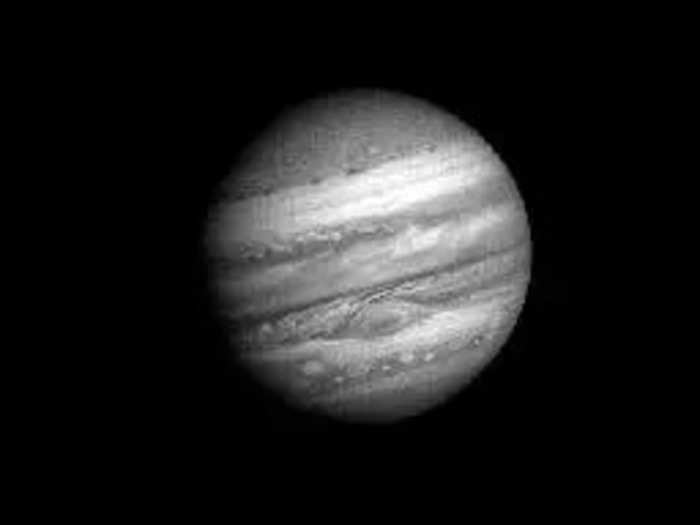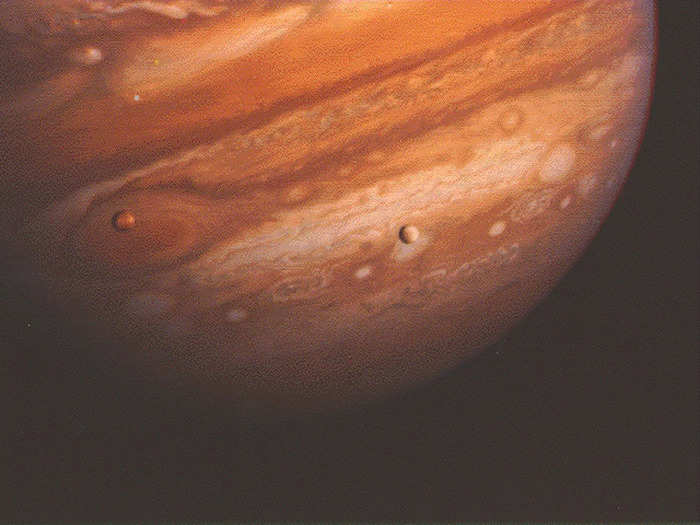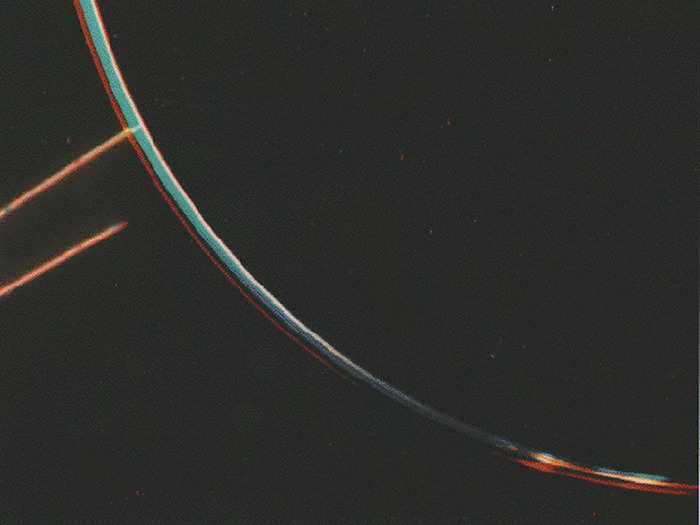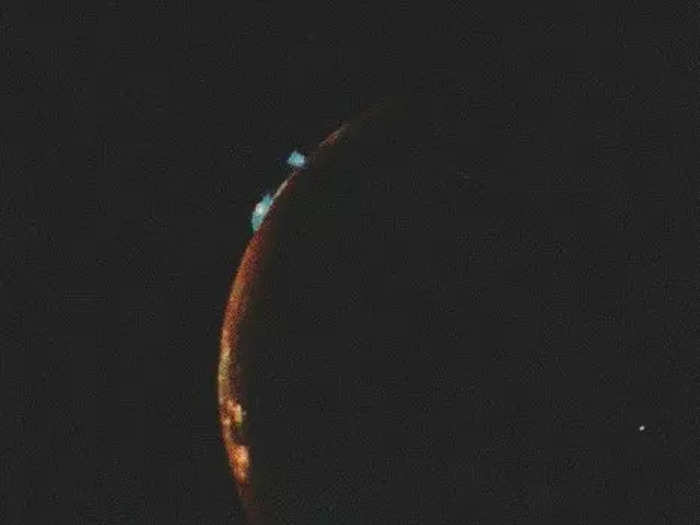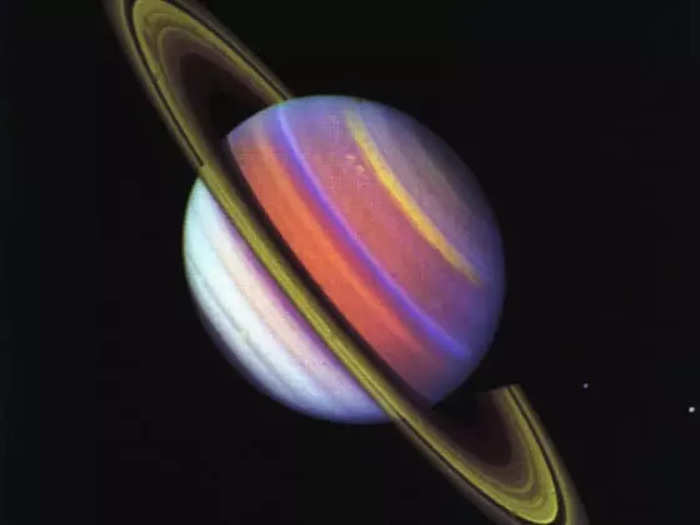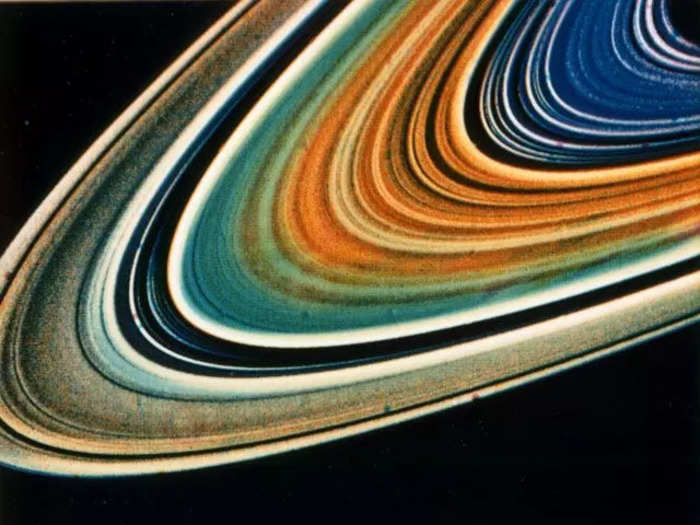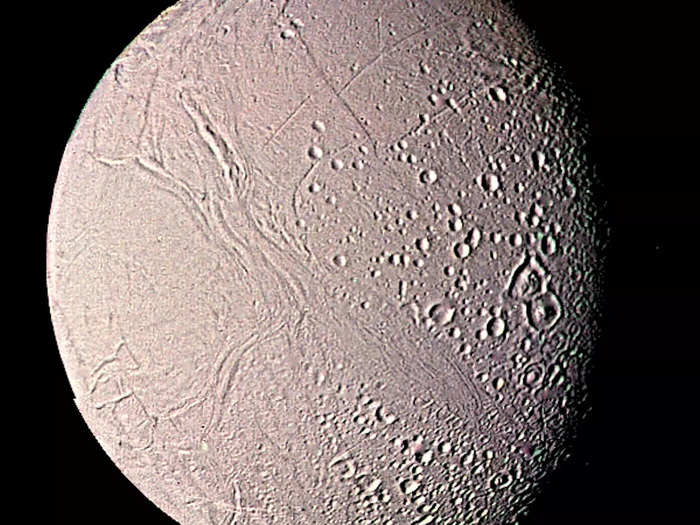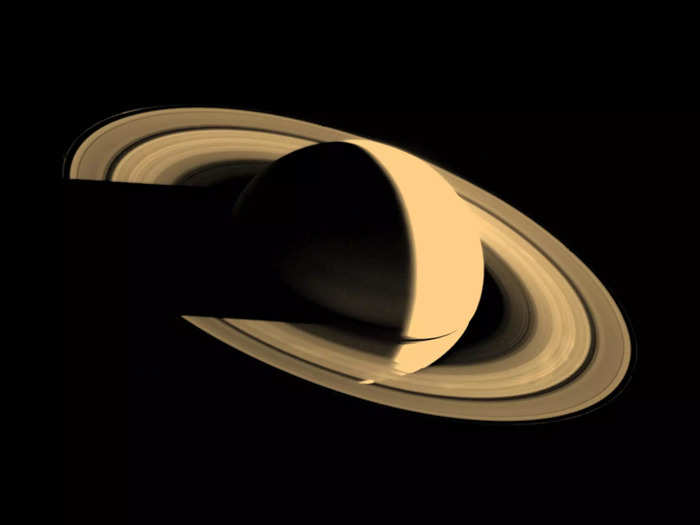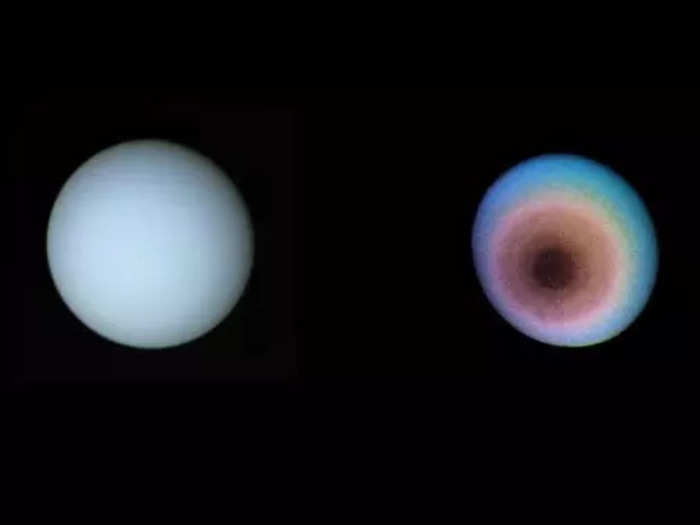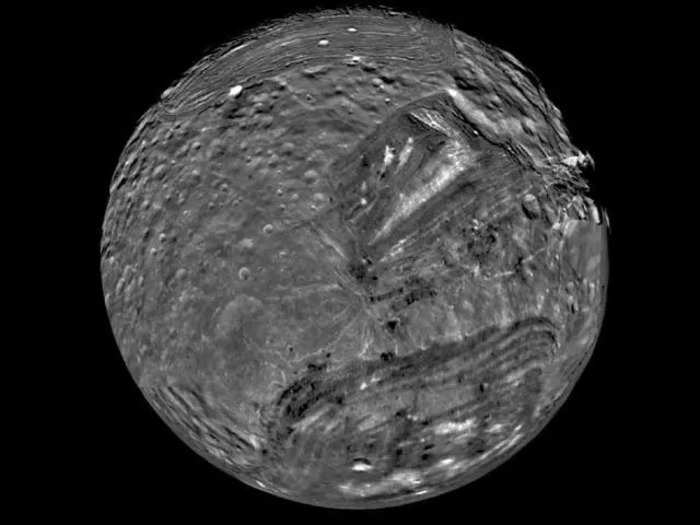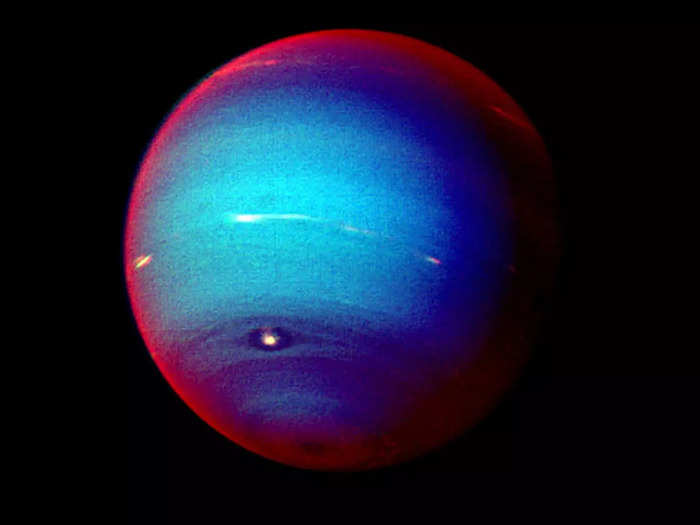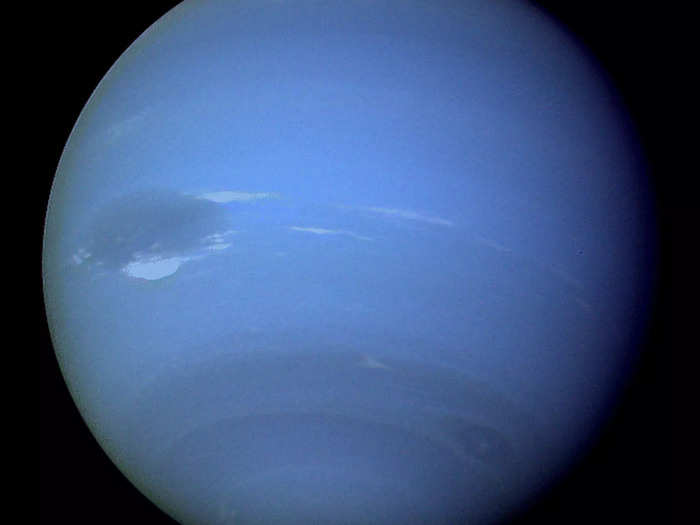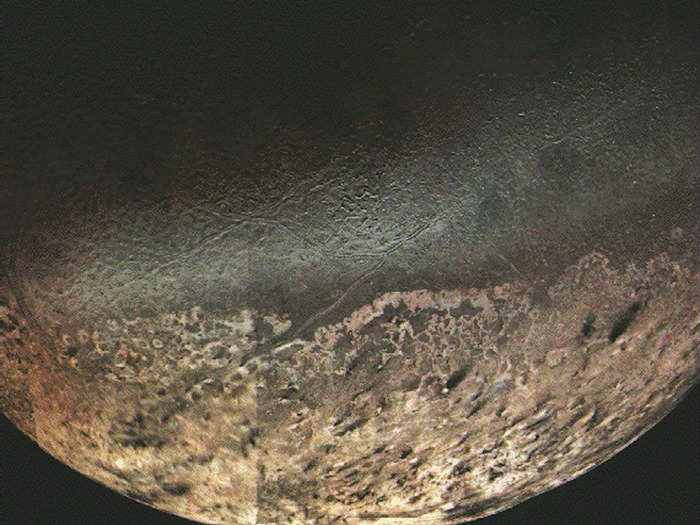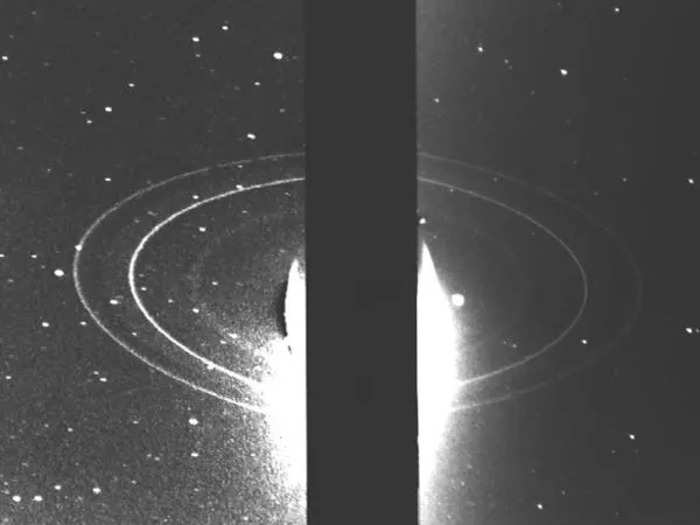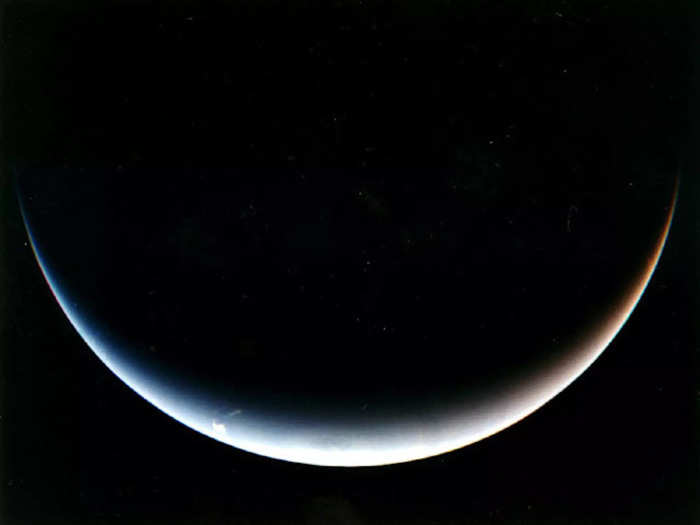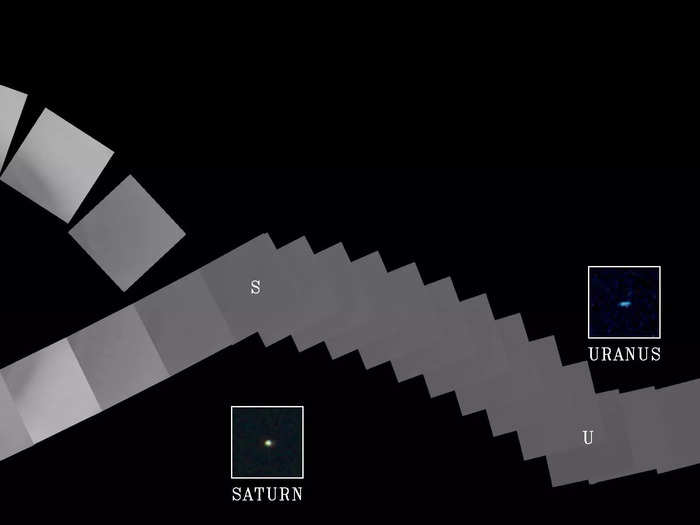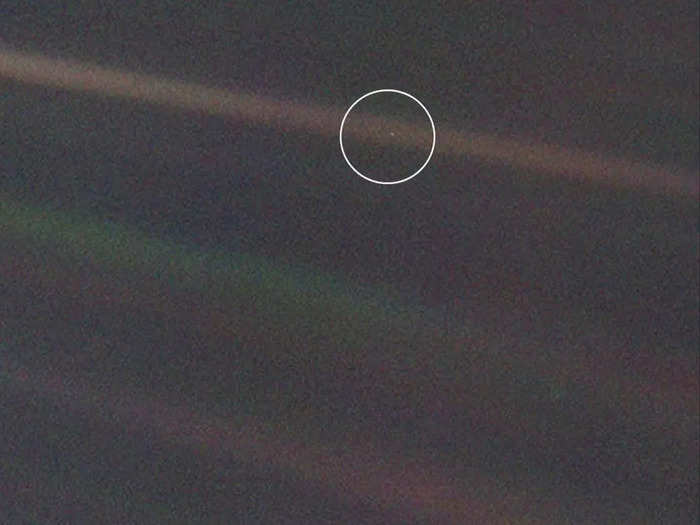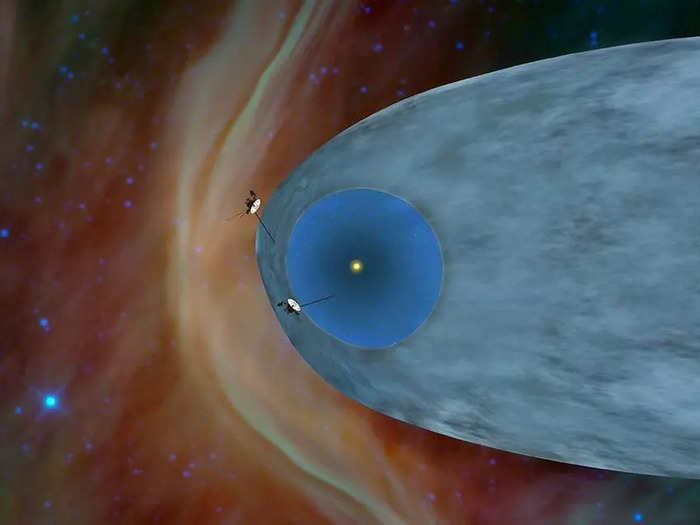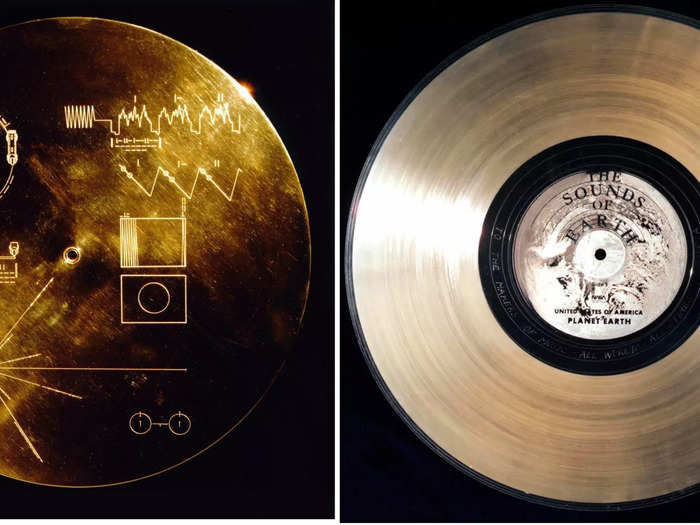This montage shows examples of striking images of the solar system Voyager 1 and 2 took on their missions.NASA/JPL/Insider
- Almost 45 years after their launch, Voyager 1 and 2 are still operating.
- But with power dwindling, the probes may soon reach the end of their scientific mission.
The Voyager probes are pioneers of science, making it further into space than any other man-made object.
NASA originally sent the twin probes on a four-year mission to Jupiter and Saturn in 1977; they exceeded all expectations, and are still going 45 years later.
Amazing photos of the solar system are among the achievements they beamed back before NASA shut the cameras down.
But now, they face a terminal problem: their power is running out, and NASA scientists are shutting down even more instruments on board to conserve energy.
As they near the end of their mission, here are 18 images from Voyager that changed science:
The Voyager probes were designed to visit Jupiter and Saturn.
The voyager probes wizzed through the solar system taking unprecedented pictures. NASA
The Voyager mission included two probes — Voyager 1 and Voyager 2 — which NASA launched in 1977 within a few months of each other.
The launches capitalized on a rare alignment of planets that allowed them to turbocharge their journeys into space.
NASA originally built the probes to last five years, but have exceeded that lifespan many times.
This is what Voyager 1 saw on its approach to Jupiter.
A time-lapse Voyager 1 took as it approached Jupiter in 1979. NASA/JPL
Voyager 1 and Voyager 2 reached Jupiter in 1979. They took about 50,000 pictures of the planet in total, which greatly exceeded the quality of the pictures scientists took from Earth, according to NASA.
The pictures taught scientists important facts about the planet's atmosphere, magnetic forces, and geology that would have been difficult to decipher otherwise.
The probes discovered two new moons orbiting Jupiter: Thebe and Metis....
Jupiter and two of its moons, as seen by the Voyager probes. NASA/JPL
...as well as a thin ring around Jupiter.
A false-color image of Jupiter's ring, discovered by the Voyager probes. NASA/JPL
Voyager 1's biggest discovery was volcanic activity at the surface of Io, one of Jupiter's moons.
A picture taken by the Voyager probes uncovered volcanoes at the surface of Io. NASA/JPL
Next stop: Saturn
NASA used three Voyager 2 images — taken through ultraviolet, violet and green filters — to make this photograph. NASA/JPL
In 1980 and 1981, the probes reached Saturn. The flyby gave scientists unprecedented insight into the planet's ring structure, atmosphere, and moons.
Voyager taught scientists about the detail of Saturn's rings.
A Voyager probe took this false-color image of Saturn's rings on August 23, 1981. NASA
Voyager captured Enceladus, Saturn's moon, in unprecedented detail.
Enceladus, one of Saturn's moons, as seen by Voyager. NASA/JPL
This picture, taken as the probe flew away, provided a unique view of the planet.
Voyager 1 looked back to Saturn on November 16, 1980, to give this unique perspective on its rings, partially covered in shadow. NASA/JPL
By 1986, Voyager 2 had made it to Uranus
Voyager 2 captured these images, in true color (left) and false-color (right) of Neptune in 1986. NASA/JPL
Voyager 1 continued straight on and would not come across another planet on its journey out of the solar system.
But Voyager 2 kept on its exploration of our nearest planets, passing within 50,600 miles of Uranus in January 1986.
It discovered an extra two rings around Uranus, revealing the planet had at least 11, not 9.
Its pictures of Uranus' largest moons also uncovered 11 previously unseen moons.
The Voyager probes' pictures of Miranda, Uranus' moon, revealed its complicated geological past. NASA/JPL
Here is a picture of a Miranda, Uranus's sixth-biggest moon.
Voyager 2 was the first spacecraft to observe Neptune from a close distance.
Neptune, seen in false color by Voyager 2 in 1989. Here, the red or white coloring means that sunlight is passing through a methane-rich atmosphere. NASA/JPL
In 1989, 12 years after its launch, Voyager 2 passed within 3,000 miles of Neptune.
A picture shows the blue Neptune in full.
Neptune, as seen by Voyager 2 in 1989. NASA/JPL
A picture shows Triton's rough surface.
Triton, as seen by Voyager 2 in 1989. NASA/JPL
It captured Triton, Neptune's moon in unprecedented detail.
Another shows Triton's southern hemisphere.
Neptune, as seen by Voyager 2 in 1989. NASA/JPL
It captured Neptune's rings.
Neptune's rings. NASA/JPL
Here, Voyager saw the crescent shape of Neptune's south pole as it departed.
Neptune, as seen by Voyager 2 in 1989. NASA/JPL
Voyager 2 would never take pictures again. Since it wouldn't come across another planet on its ongoing journey, NASA switched off its cameras after its flyby of Neptune to conserve energy for other instruments.
Voyager took 60 images of the solar system from about 4 billion miles away.
Voyager 1 provided the solar system's portrait in 1990. NASA/JPL
As its last photographic hurrah, Voyager 1 took 60 images of the solar system from 4 billion miles away in 1990.
It gave us the Earth's most distant self-portrait, dubbed the "pale blue dot."
This is the Earth, seen from 4 billion miles away. NASA
This is likely to remain the longest-range selfie in the history of humankind for some time: a portrait of the Earth from 4 billion miles away.
After this picture, NASA switched off Voyager 1's cameras to save energy. NASA could switch the probes' cameras back on, but it is not a priority for the mission.
Beyond the solar system
This artist's concept shows the general locations of NASA's two Voyager spacecraft. Voyager 1 (top) has sailed beyond our solar bubble into interstellar space, the space between stars. NASA/JPL-Caltech
Even after their instruments are switched off, the probes' mission continues.
A collage shows the two sides of NASA's golden record, which is onboard the Voyager probes. NASA/Insider
Now NASA is planning to switch more off the probes' instruments with the hope of extending their life to the 2030s.
But even after all instruments become quiet, the probes will still drift off carrying the golden record, which could provide crucial information about humanity should intelligent extraterrestrial life exist and should it come across the probes.


